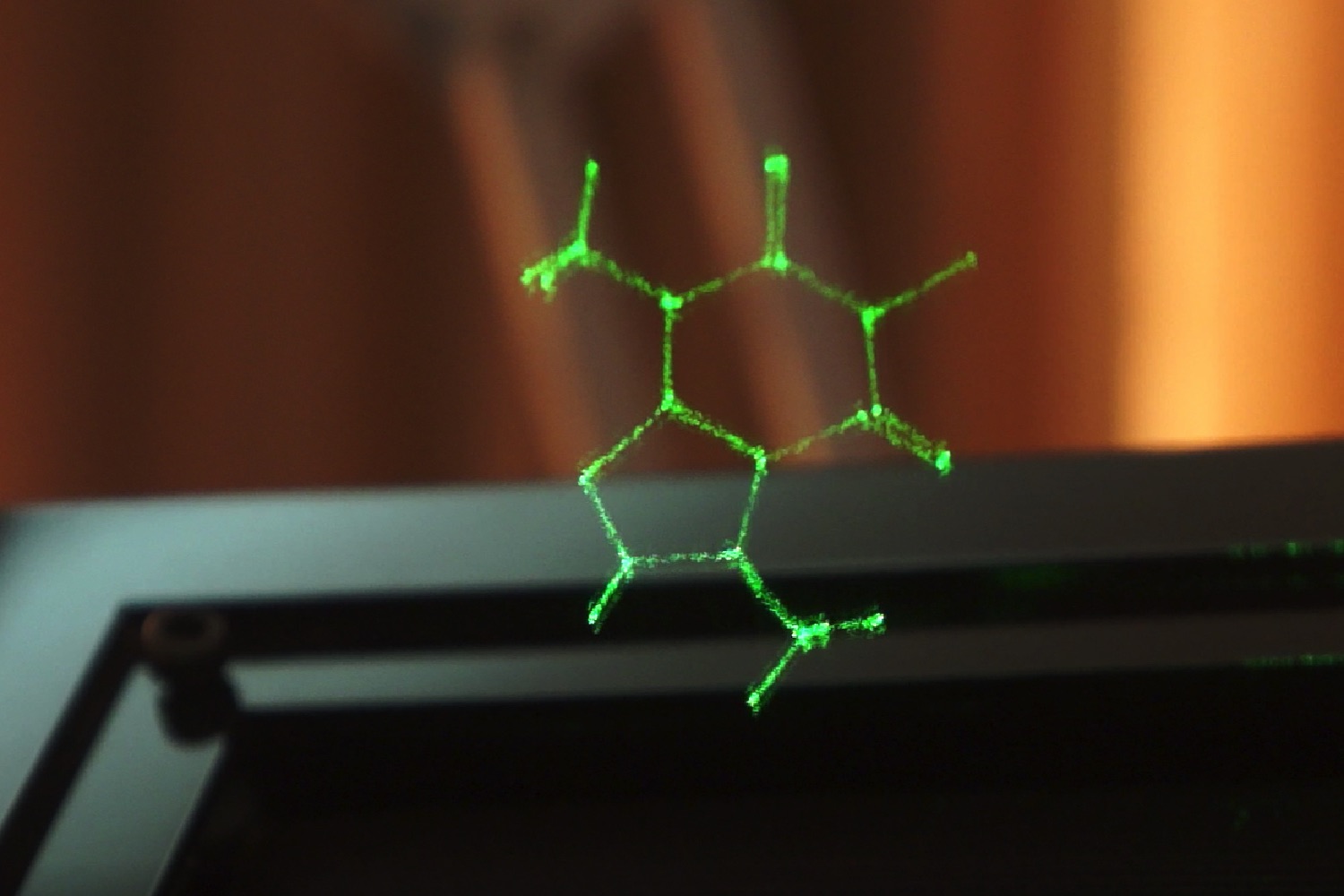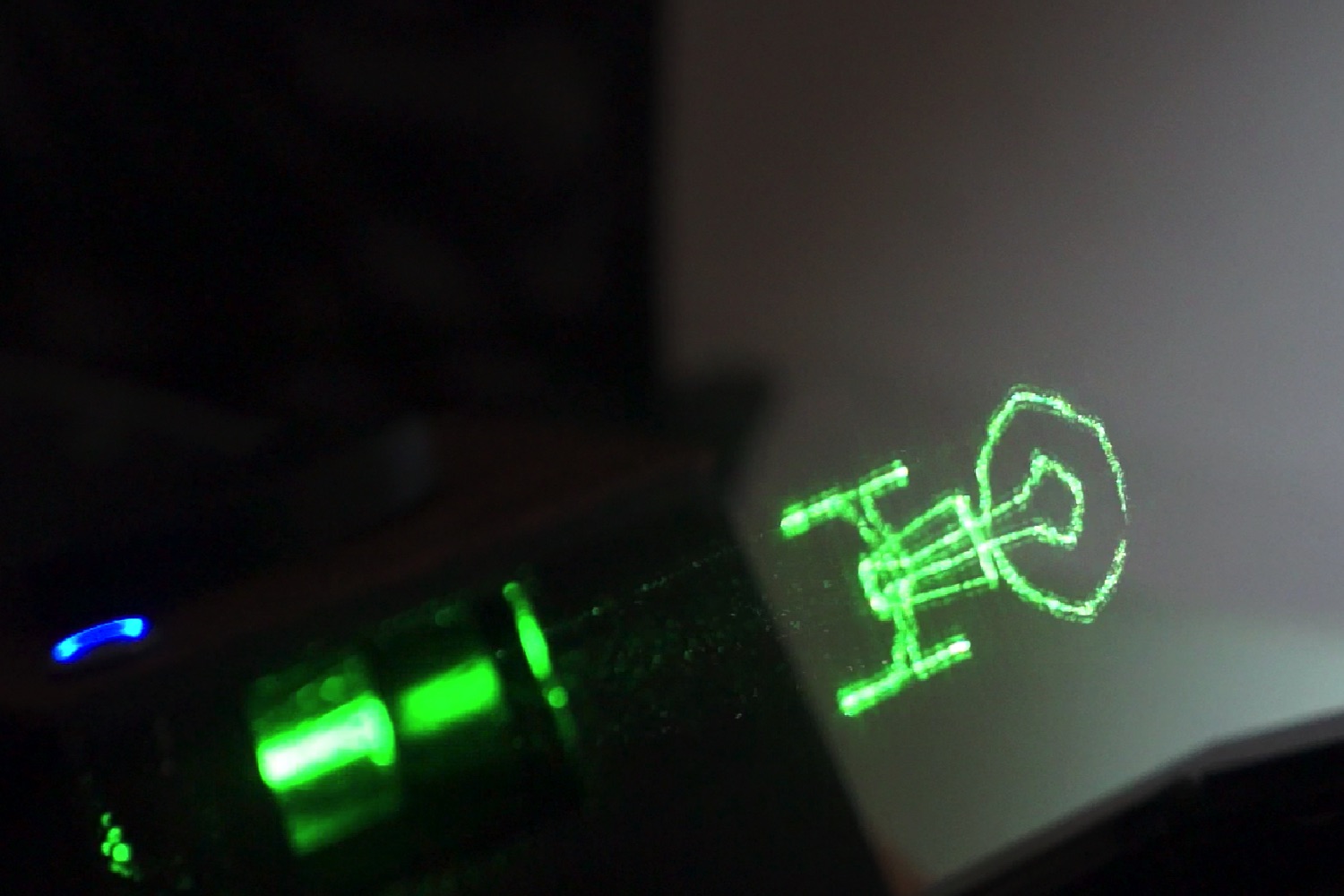The scene stuck with Ruiz-Avila, and helped trigger a lasting interest in holograms and similar technology. Jump forward a few decades, and Ruiz-Avila’s childhood dream has become a reality with his creation of what he refers to as the world’s “first commercially available, laser-based desktop ‘holographic’ display.”
Currently raising funds on Kickstarter, the self-contained, laser-based, volumetric display system will comfortably fit on your lab bench or desk, and boasts the ability to draw 3D objects in midair using light. (There’s no guarantee, however, that said images will put you on the path to unlocking your hidden Jedi powers!)
“This is an idea I’ve had for a long, long time,” Ruiz-Avila told Digital Trends. “At university my thesis had to do with holographic chambers and lasers. However, the technology to make this accessible and cheap didn’t exist until very recently. It was only recently that I came back to focusing on this project and, last year, was able to build the very first prototypes.”
Technically, the images spat out by the Holovect aren’t actually holograms, but rather vector images projected onto the air. It’s incredibly neat, though, and Ruiz-Avila is convinced people will enjoy creating different 3D images for the device.
“At first, I thought this would just be a curiosity for people,” he said. “But as I’ve shown more and more people, I’ve become increasingly excited. There are lots of use-cases. For example, you could do visualization of molecules for learning. It’s amazing how much more your brain picks up when you’re looking at an object in three dimensions instead of a flat image on a screen. Somehow it really helps you understand it. It could also be very useful in advertising, such as having a logo spinning in midair.”
Beyond that, the sky (or, perhaps more accurately, midair) really is the limit. “I don’t know what all the applications are going to be,” he concluded. “But I think they’re going to be wonderful.”
If you share Ruiz-Avila’s contagious optimism, you can pledge $750 or more for an early bird version of Holovect: Holographic Vector Display by checking out the Kickstarter campaign.







